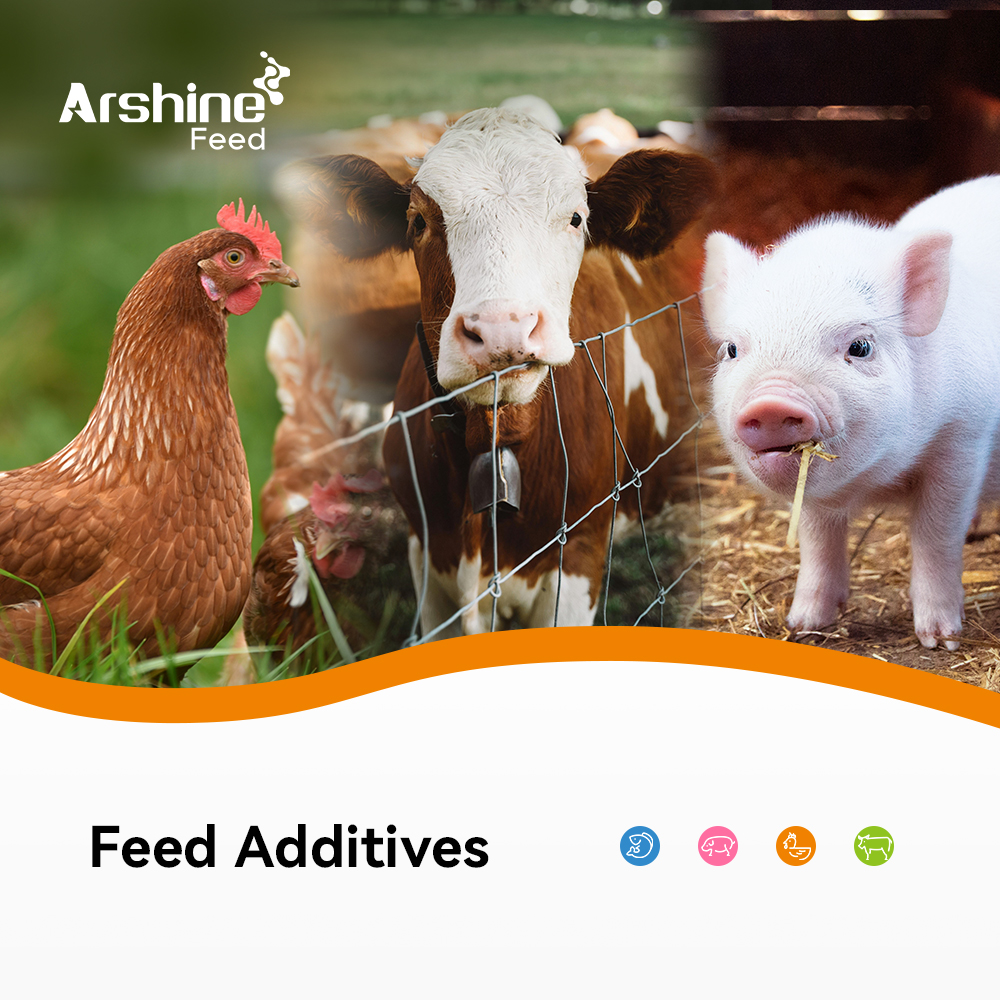

Monoammonium phosphate is generally used as a feed additive for ruminants.
| Specification | Standard | Result | |||
| Main Content NH4H2PO4 | ≥98.0 | 99.1 | |||
| Phosphates as P2O5 w/% | ≥61.0 | 61.6 | |||
| Nitrogen As N w/% | ≥11.0 | 12.3 | |||
| Water insoluble w/% | ≤0.3 | 0.1 | |||
| Sulphate SO4 | ≤0.01 | 0.008 | |||
| Fluoride As F (mg/kg) | ≤10.0 | 7.2 | |||
| Arsenic As (mg/kg) | ≤3.0 | 2.1 | |||
| Lead As Pb (mg/kg) | ≤4.0 | 2.3 | |||
| Heavy Metals As Pb (mg/kg) | ≤10.0 | 6.1 | |||
| Moisture w/% | ≤0.5 | 0.15 | |||
| PH Value | 4.0-5.0 | 4.5 | |||
| Appearance | White Powder (Crystals) | ||||
Monoammonium phosphate (MAP) in its feed-grade form serves several functions and has various applications in animal nutrition. Here are its functions and applications:
Phosphorus and Nitrogen Source: Monoammonium phosphate is a source of both phosphorus and nitrogen in animal feed. Phosphorus is an essential mineral required for bone development, energy metabolism, and various physiological functions in animals. Nitrogen is a vital component of amino acids, proteins, and nucleic acids, essential for growth, reproduction, and overall metabolic function in animals. MAP supplementation helps meet the dietary requirements of animals for both phosphorus and nitrogen.
Bone Development and Health: Phosphorus is a major component of bone tissue and is essential for bone formation, growth, and mineralization in animals. Adequate phosphorus levels in the diet support skeletal development, bone strength, and overall bone health in young growing animals, as well as bone maintenance and integrity in mature animals. MAP supplementation contributes to optimal bone mineralization and reduces the risk of skeletal disorders such as rickets and osteomalacia.
Energy Metabolism: Phosphorus is involved in energy metabolism as a component of adenosine triphosphate (ATP), the primary energy currency in cells. Adequate phosphorus levels support cellular energy production, nutrient utilization, and metabolic processes involved in growth, reproduction, and overall physiological function in animals. MAP supplementation ensures sufficient phosphorus availability for optimal energy metabolism and metabolic health in livestock, poultry, and other animals.
Amino Acid Synthesis: Nitrogen from MAP is essential for amino acid synthesis, which serves as the building blocks of proteins and plays a crucial role in growth, muscle development, immune function, and reproductive health in animals. Adequate nitrogen levels support protein synthesis, tissue repair, enzyme activation, and overall metabolic function, contributing to improved growth performance and production efficiency in animals.
Acidification: MAP has acidic properties, which can help lower the pH of feed and the gastrointestinal tract of animals. Acidification of the digestive tract creates an environment that is less favorable for the growth of pathogenic bacteria and enhances the digestion and absorption of nutrients, leading to improved feed efficiency, nutrient utilization, and overall gut health in animals.
Feed Additive: MAP may also serve as a feed additive to improve the palatability, flowability, and handling characteristics of animal feeds. As a granular form, MAP facilitates uniform mixing and distribution of phosphorus and nitrogen in feed formulations, ensuring consistent nutrient content in each feed batch. Its granular nature also reduces dustiness and improves feed pellet quality, resulting in enhanced feed intake and utilization by animals.
Regulatory Compliance: MAP used in feed applications complies with regulatory standards and guidelines established by food and feed safety authorities. Its use in animal feed is regulated to ensure safe and effective use without compromising animal health or product quality.
Application in Various Animal Feeds: MAP feed grade can be incorporated into various types of animal feeds, including poultry, swine, cattle, and aquaculture diets, to provide phosphorus and nitrogen supplementation, support bone development and health, improve energy metabolism, enhance amino acid synthesis, promote acidification of the digestive tract, and improve feed quality and handling. Its versatility makes it suitable for use in different production systems and environments.
In summary, monoammonium phosphate feed grade serves as an essential nutritional supplement in animal nutrition, providing phosphorus and nitrogen necessary for bone development, energy metabolism, amino acid synthesis, and overall metabolic function in animals. Its applications extend to various animal species and production systems, contributing to overall animal health, welfare, and productivity.
Add: Block 14, No.100, Luyun Road,Changsha 410205,China.
Mobile: +86 18874001228
Email: info@arshinefeed.com
WhatsApp: 8618874001228
WeChat: weiyuyan91